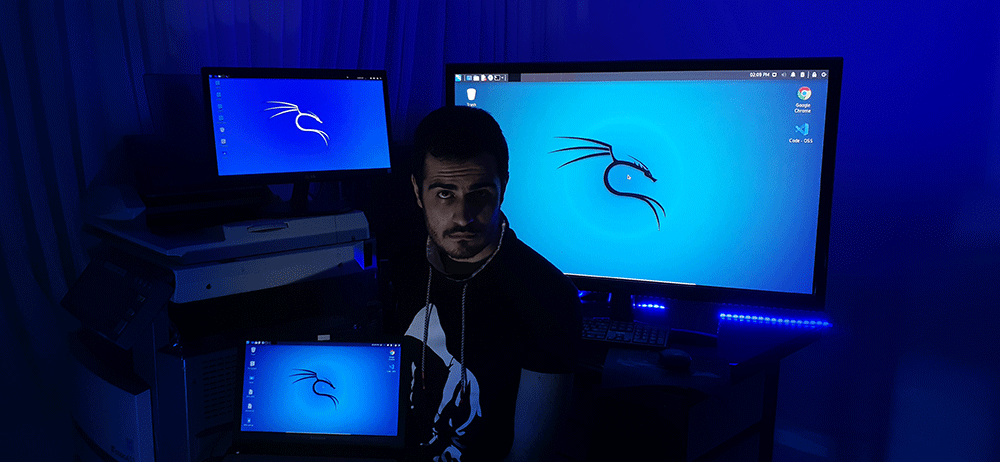
پنهان سازی اطلاعات در تصویر با steghide
در این آموزش شما یاد خواهید گرفت که چطور با استفاده از ابزار steghide اقدام به پنهان سازی اطلاعات در تصویر های خود کنید.
نصب ابزار steghide
جهت نصب ابزار steghide در لینوکس کافیست دستورات زیر را در ترمینال لینوکس خود وارد کنید:
sudo apt-get install steghideدر ادامه از شما سؤالی مبنی بر ادامه دادن نصب ابزار steghide خواهد پرسید که با زدن y نصب این ابزار تکمیل خواهد شد.
مخفی سازی اطلاعات در عکس با steghide
بسیار خب ما به یک عکس با فرمت JPEG نیاز داریم به همراه یک فایل TXT که حاوی اطلاعات محرمانه ماست.
در ادامه با وارد کردن دستورات زیر میتوانیم اقدام به مخفی سازی فایل TXT در فایل JPEG کنیم:
steghide embed -cf matin.jpg -ef security.txtبه جای matin.jpg آدرس تصویر خود را وارد میکنید و بجای security.txt آدرس فایل TXT خود را جهت مخفی سازی آن در تصویر matin.jpg می دهید.
در ادامه از شما پسورد میخواهد که بایستی برای این فایل مخفی سازی شده یک پسورد نیز قرار دهید.
کسب اطلاعات از محتویات مخفی شده در تصویر
جهت مشاهده اطلاعات مخفی شده در تصویر باید از دستور زیر استفاده کنید:
steghide info matin.jpgدر ادامه با وارد کردن پسورد قادر به شناسایی اطلاعات مخفی شده خواهید بود.
نحوه استخراج اطلاعات مخفی شده در تصویر
حال میرسیم به مرحله استخراج اطلاعات در تصویر ، که برای این کار باید از دستور زیر استفاده کنید:
steghide extract -sf matin.jpgدر ادامه با وارد کردن پسورد اطلاعات شما از تصویر خارج خواهد شد و قادر به بررسی آن خواهید بود.
دقت داشته باشید که بجای matin.jpg باید آدرس تصویر خود را وارد کنید ، ما در این مثال ها فرض را بر این میگیریم که الان در دایرکتوری Desktop هستیم و تمامی فایل ها برروی Desktop می باشند.
می توانید جهت کسب اطلاعات بیشتر مطالب زیر را مطالعه کنید:
DESCRIPTION
Steghide is a steganography program that is able to hide
data in various kinds of image- and audio-files. The
color- respectivly sample-frequencies are not changed thus
making the embedding resistant against first-order statis
tical tests.
Features include the compression of the embedded data,
encryption of the embedded data and automatic integrity
checking using a checksum. The JPEG, BMP, WAV and AU file
formats are supported for use as cover file. There are no
restrictions on the format of the secret data.
Steghide uses a graph-theoretic approach to steganography.
You do not need to know anything about graph theory to use
steghide and you can safely skip the rest of this para
graph if you are not interested in the technical details.
The embedding algorithm roughly works as follows: At
first, the secret data is compressed and encrypted. Then a
sequence of postions of pixels in the cover file is cre
ated based on a pseudo-random number generator initialized
with the passphrase (the secret data will be embedded in
the pixels at these positions). Of these positions those
that do not need to be changed (because they already con
tain the correct value by chance) are sorted out. Then a
graph-theoretic matching algorithm finds pairs of posi
tions such that exchanging their values has the effect of
embedding the corresponding part of the secret data. If
the algorithm cannot find any more such pairs all
exchanges are actually performed. The pixels at the
remaining positions (the positions that are not part of
such a pair) are also modified to contain the embedded
data (but this is done by overwriting them, not by
exchanging them with other pixels). The fact that (most
of) the embedding is done by exchanging pixel values
implies that the first-order statistics (i.e. the number
of times a color occurs in the picture) is not changed.
For audio files the algorithm is the same, except that
audio samples are used instead of pixels.
The default encryption algorithm is Rijndael with a key
size of 128 bits (which is AES - the advanced encryption
standard) in the cipher block chaining mode. If you do not
trust this combination for whatever reason feel free to
choose another algorithm/mode combination (information
about all possible algorithms and modes is displayed by
the encinfo command). The checksum is calculated using
the CRC32 algorithm.
info, --info
Display information about a cover or stego file.
encinfo, --encinfo
Display a list of encryption algorithms and modes
that can be used. No arguments required.
version, --version
Display short version information. No arguments
required.
license, --license
Display steghide's license. No arguments required.
help, --help
Display a help screen. No arguments required.
EMBEDDING
You should use the embed command if you want to embed
secret data in a cover file. The following arguments can
be used with the embed command:
-ef, --embedfile filename
Specify the file that will be embedded (the file
that contains the secret message). Note that
steghide embeds the original file name in the stego
file. When extracting data (see below) the default
behaviour is to save the embedded file into the
current directory under its original name. If this
argument is omitted or filename is -, steghide will
read the secret data from standard input.
-cf, --coverfile filename
Specify the cover file that will be used to embed
data. The cover file must be in one of the follow
ing formats: AU, BMP, JPEG or WAV. The file-format
will be detected automatically based on header
information (the extension is not relevant). If
this argument is omitted or filename is -, steghide
will read the cover file from standard input.
-sf, --stegofile filename
Specify the name for the stego file that will be
created. If this argument is omitted when calling
steghide with the embed command, then the modifica
tions to embed the secret data will be made
directly to the cover file without saving it under
Specify the compression level. The compression
level can be any number in 1...9 where 1 means best
speed and 9 means best compression.
-Z, --dontcompress
Do not compress the secret data before embedding
it.
-K, --nochecksum
Do not embed a CRC32 checksum. You can use this if
the secret data already contains some type of
checksum or if you do not want to embed those extra
32 bits needed for the checksum.
-N, --dontembedname
Do not embed the file name of the secret file. If
this option is used, the extractor needs to specify
a filename to tell steghide where to write the
embedded data.
EXTRACTING
If you have received a file that contains a message that
has been embedded with steghide, use the extract command
to extract it. The following arguments can be used with
this command.
-sf, --stegofile filename
Specify the stego file (the file that contains
embedded data). If this argument is omitted or
filename is -, steghide will read a stego file from
standard input.
-xf, --extractfile filename
Create a file with the name filename and write the
data that is embedded in the stego file to it. This
option overrides the filename that is embedded int
the stego file. If this argument is omitted, the
embedded data will be saved to the current direc
tory under its original name.آیا این مطلب برای شما مفید بود ؟




